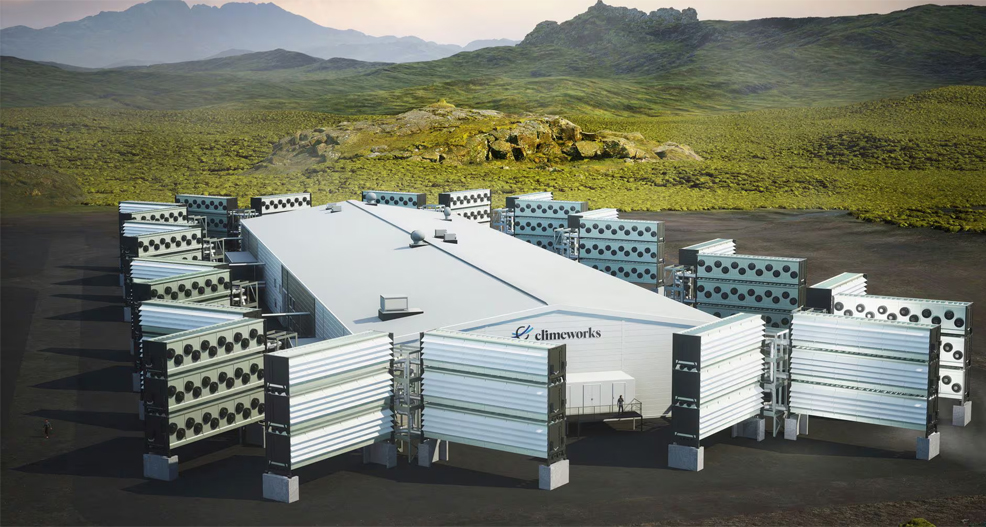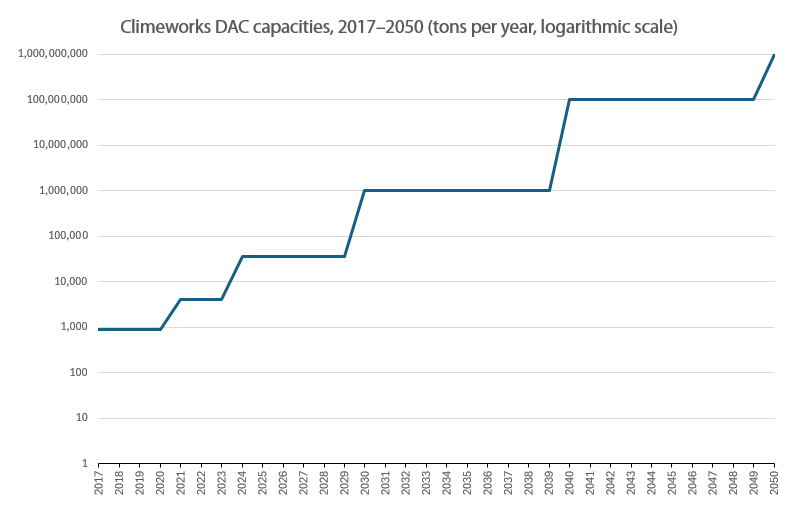
4th March 2024 New carbon capture plant will boost capacity by an order of magnitude A direct air capture facility known as "Mammoth" will remove up to 36,000 tons of CO2 from the atmosphere each year, nearly 10 times the capacity of its predecessor. The company involved is aiming for gigatons per year by 2050.
Founded in 2009, Climeworks is a pioneer in carbon capture technology. The Swiss-based company has developed a system combining arrays of fans and filters to suck in ambient air, extract the carbon dioxide (CO2) it contains and then either store it underground, or upcycle it for other uses. Climeworks' machines run on renewable energy or energy-from-waste and re-emit less than 10% of the CO2 they capture. Capricorn, the first industrial-scale direct air capture (DAC) facility by Climeworks, had a modest 900 tons of annual CO2 removal capacity when officially launched in 2017. A second project known as Orca followed in 2021, featuring 4,000 tons of capacity, making it 1,000 times more effective than trees on the equivalent land area. More recently, Climeworks has been working on a much larger facility known as Mammoth, which is designed to capture up to 36,000 tons annually, or nine times more than Orca. Groundbreaking on this newest project began in June 2022. A little under two years later, the infrastructure is now largely complete, with 90% of systems operational, including that of storage partner Carbfix. Climeworks is currently installing the last part of the plant – its CO2 collector containers – which will filter the CO2 out of the air. The first 12 of these collectors have already arrived onsite, with a further 60 to follow shortly. Like its predecessor, Mammoth is located in Hellisheidi, Iceland, about 25 km east of the capital, Reykjavik. If all goes according to plan, the project will launch in May.
"Mammoth shows how Climeworks is championing DAC deployment," said Jan Wurzbacher, co-founder and co-CEO of Climeworks. "Since 2021, we have been operating our commercial DAC plant, Orca. Now its big brother is taking final shape: Mammoth represents not only a ten-fold increase in carbon removal capacity but also a step change in project management, supply chain volume, and workforce requirements. Having the core infrastructure in place and operational within just 18 months is a proof point of Climeworks' ability to scale up quickly, with extremely fast development cycles. This milestone has been achieved thanks to the Climeworkers who worked relentlessly in Iceland throughout the past months. Amidst harsh winter conditions, they commissioned the plant's systems in record time, and I want to express my deepest gratitude to everyone involved." Compared to the estimated 37.2 Gt of worldwide energy-related CO2 emissions, the strides made by Climeworks may appear small. It would take more than a million of these facilities to offset humanity's total carbon output. However, as with many technologies of the early 21st century, the capacity of direct air capture has potential to follow an exponential trend – and indeed, is now doing so. Climeworks has already achieved kiloton capacity with its Orca plant. Looking further ahead, the company is planning to break the megaton barrier by 2030 and 100 megatons by 2040, with an ultimate target of gigaton-scale facilities by 2050. That sort of capacity could make a real dent in the atmospheric concentration of the primary greenhouse gas responsible for global warming. And as DAC becomes ever cheaper, more scalable, and more widespread, other companies will be joining Climeworks in this critical endeavour, perhaps finally turning the tide on climate change and helping to forge a more sustainable future for our planet.
Comments »
If you enjoyed this article, please consider sharing it:
|
||||||








